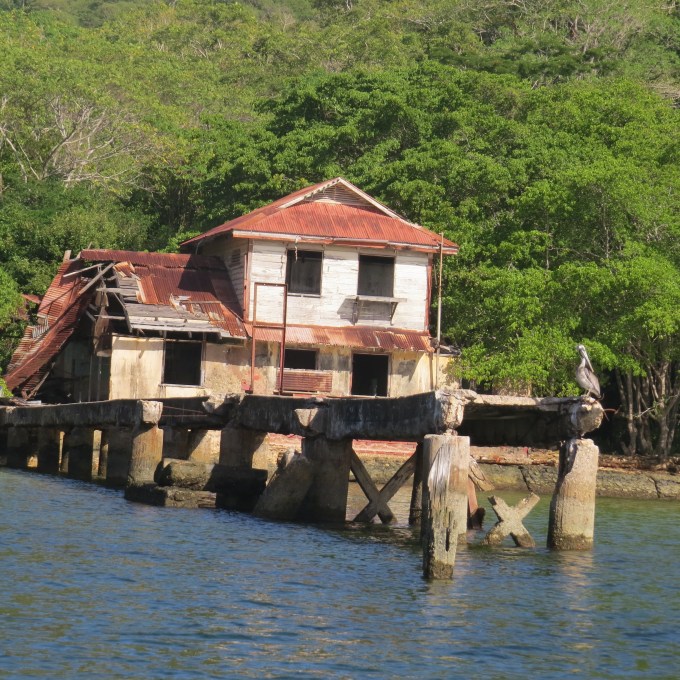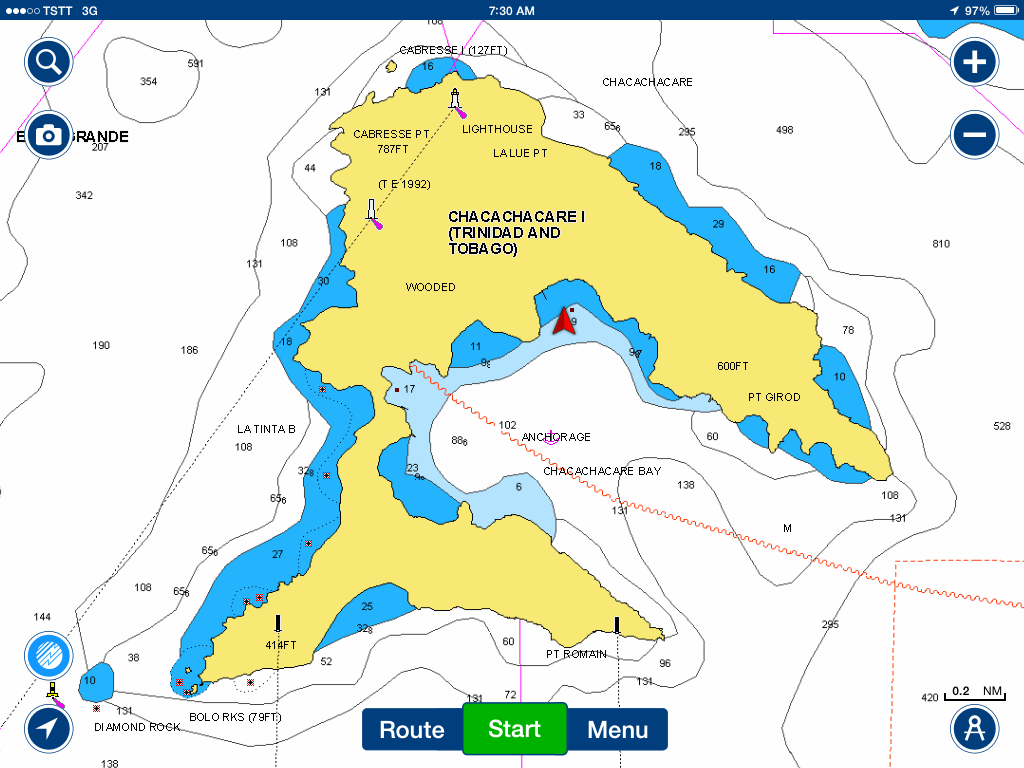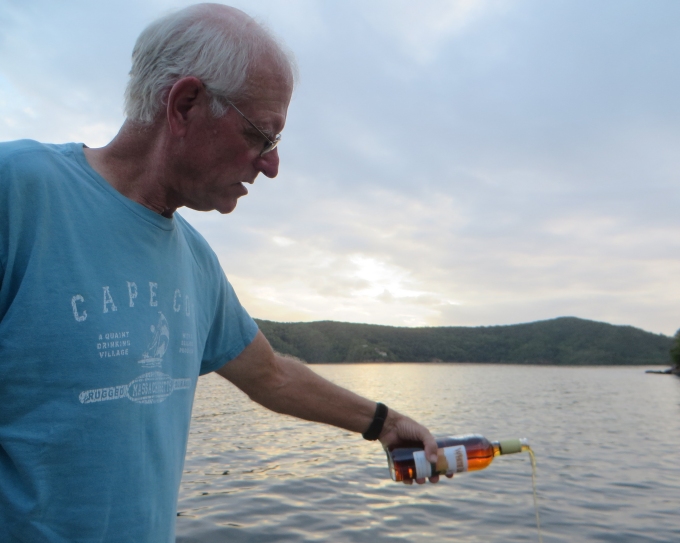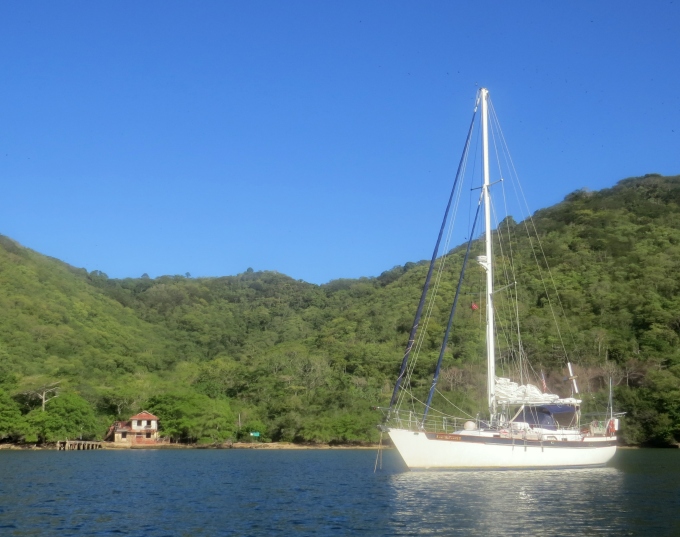Lepers and Lighthouses - Pt. 2
/Exploring Chacachacare Island, Trinidad
We had a hard time figuring out where to find the path to the lighthouse. We had climbed it once before, but access had seemed more evident. During the week, men had been working, in a rather desultory manner, on an old, decrepit public wharf which proved to be inaccessible by the dinghy. The wharf area was all fenced in. Behind it, we could see a sign welcoming us to Chacachacare Island. Dozens of vultures stood sentry, not bothered in the least by our presence, just daring us to come ashore. We had found a hiking map for Chacachacare on line, but the shore road delineated on the map had collapsed. It appeared however, that the road to the lighthouse led from the wharf. We beached the dinghy nearby.

On shore, empty oil drums were everywhere...some overflowing with trash, others knocked over with trash spilling out of them. Tens of torn, black plastic trash bags disgorged their contents. Plastic bottles, beer bottles and rubbish was thick on the shore. A No Littering sign stood firmly in the midst of the junk and debris.

We carefully picked our way through the rubbish and found the asphalt road leading up to the lighthouse. The first few hundred feet were covered in trash, but soon the trash was left behind (obviously it's inconvenient to litter further up a steep hill) and we were climbing the pleasant, albeit steep, switch-backed road to the summit of the hill (825'/251.5m) where the lighthouse stood. The Brits built the lighthouse in 1876 and cut the road to the top. Hardy weeds poked through the crumbling asphalt and remnants of a sturdy, retaining wall could be glimpsed midst the heavy jungle foliage.

We climbed and climbed, stopping for brief respites in shady spots. Cotton plants bloomed and rotten bolls hung from the blossoms. Colorful butterflies and dragonflies flitted past. Birds sang in the trees. And, as always, vultures circled overhead.

We remembered reaching the top on our last visit. The lighthouse was still tended then and we chatted with the lighthouse keeper. The area was kept fairly neat and tidy. We took turns swinging on an old swing suspended from a sturdy branch. What a change! Old diesel oil drums were haphazardly lined up like undisciplined soldiers...some in the bush, rolled half way down the hill. Trash and debris was scattered all over. The old swing hung limply, the thick weed patch below it testifying to its disuse.

The once stately Bocas Lighthouse was faded and in sad shape. Solar panels had been added. No lighthouse keeper was needed any longer. The area was all fenced in and an unsightly, erector-set communications tower stood beside it. A committee of vultures had established their territorial presence on both structures and had no intention of moving away.

We ambled back down the path, much faster on the descent than the ascent had been. We always see new sights when the path is viewed from a new perspective. An abandoned oropendula nest suspended from a bamboo tree, swayed in the breeze. Several different species of butterflies fluttered past. Birds twittered away in the dense foliage, keeping themselves well hidden.

We returned to the dinghy and headed back to Cups. We weren't really disappointed, as much as dismayed by the volume of trash and garbage that had accumulated and remained in such a beautiful place. We remembered a sign in a bus in Ecuador years ago which read “Keep this bus clean. Throw trash out the window.” Chacachacare Island remains under the auspices of Trinidad's national parks system, but it appears it's an orphaned child. It would take an army to clean it up and haul all the refuse away. We postulated that a prison work detail would make a good dent in it, but then who would continue to keep it up? We're hopeful that the workers we saw on the wharf are the beginning of a solid reclamation project.
After five days in our blessedly peaceful Chacachacare anchorage, it was time to face the congestion and frenzy of Chaguaramas. Sigh! We waited till the very last minute and sailed across the bay just a couple of hours before our scheduled haul-out time. No more tranquil anchorage. No refreshing evening dips. Back to reality.













